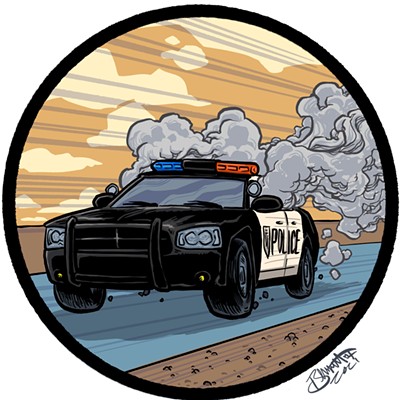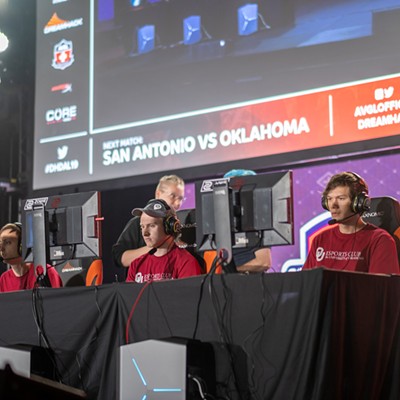Burleson said Box just smiled at the joke. “I am hurting,” Box told him. Burleson, a self-described “friend of the family,” relayed the anecdote at Box’s memorial service May 27 at Emmanuel Baptist Church in Enid, where he serves as senior pastor.
“I know that some of you have heard or read about his prescription drug abuse,” Burleson said. “The family has requested for me to say something to you that I think is very important: Until you walk a mile in a man’s shoes, it’s very difficult to judge a man.”
The sudden death of the 22-year-old senior linebacker shocked and saddened the Sooner Nation last month. Joe Castiglione, University of Oklahoma director of athletics, called the loss “devastating.” Brent Venables, Box’s defensive coordinator, said the football team was “numb” and “heartbroken.”
An Oklahoma Medical Examiner spokeswoman said toxicology results were pending at press time, but this much is known: El Reno police responded May 19 to a report of an unresponsive male. Authorities arrived to find friend J.T. Cobble performing CPR, according to a police report. Cobble said in a 911 call that Box was taking pain medication and told police he believed he had overdosed. “Controlled dangerous substance” was listed under the offense category in the report, and “drugs” was cited as possible/probable motivation.
Box was medi-flighted to Mercy Health Center, where he was pronounced dead less than a week after earning his diploma. The athlete, who redshirted as a freshman, never played his senior season of eligibility with the Sooners.
Elsewhere, professional athletes and painkillers are making headlines. Last month, a Minnesota Medical Examiner ruled the accidental death of New York Rangers hockey enforcer Derek Boogaard was caused by a mix of alcohol and the painkiller oxycodone. Quarterback Erik Ainge, now with the New York Jets, in March admitted he was addicted to painkillers as a senior at Tennessee, according to ESPN.com. In the 1990s, NFL quarterback Brett Favre admitted being addicted to Vicodin, which is hydrocodone combined with acetaminophen.
Educating Oklahomans on painkiller abuse is literally a matter of life and death, according to Jim Priest, the executive director of the Oklahoma City-based nonprofit Fighting Addiction Through Education. Box’s recent passing has raised the issue in the Oklahoma public’s mind.
“I don’t have enough information yet to comment about Austin’s situation, but I’m not surprised by Pastor Burleson’s comments,” said Priest, the 2010 Democratic nominee for attorney general. “A lot of athletes play hurt, and some play when they are seriously injured. Most athletes are very competitive, and they want to be on the field with their team. That’s why they’re willing to take meds to deal with the pain.”
PLAYING WITH PAIN
The hurting began at an early age for Box. During his funeral, Burleson said he remembered when the Enid High School standout literally broke his back as a sophomore.
“And under doctors’ care, management for his pain began,” Burleson said.
Box was a multisport superstar in high school. Despite a dislocated elbow, Box led the Enid Plainsmen to the Class 6A state title game as a senior in 2006, when he was named a Parade All- American quarterback-defensive back.
“Austin is arguably the greatest high school football player that this state has produced,” said former Enid football coach Tom Cobble at the funeral. His son, J.T., served as one of Box’s pallbearers.
Burleson, who said the Box family had no comment and is awaiting the release of the medical examiner’s report, compared football to warfare at the funeral. The pastor said he had witnessed Austin battle through multiple injuries.
“Many of you may not understand the significance of his other injuries — the surgery that he had a year ago,” Burleson said. “Think about this now: All of us who are friends, we could tell when he was hurting. Mom and Dad could tell when Austin was hurting in his back.
“On the field, he had that walk where he’d stick his chest out a little bit and you could tell something was bothering him. Try to play middle line backer for the University of Oklahoma with a back like that.”
Off the field, Box had issues. As a redshirt freshman, the linebacker was cited for outraging public decency in Norman. He also was arrested early last year for disorderly conduct in Bricktown for allegedly urinating on bar stools, according to The Oklahoman.
“These brushes with the law haven’t just happened since Box has been at college, a time when many kids
are away from home for the first time and may do things as they stretch
the limits of their newfound freedom,” wrote Kevin Hassler, associate
editor of the Enid News & Eagle, in a 2010 column after the second
incident. “Box’s run-ins with the law have been well-documented and
began when he was in high school.”
On the field at OU, Box
dealt with an array of ailments. Plagued with elbow and knee injuries
his first two seasons, Box reportedly endured relentless back pain that
required him to rest for five games.
His
suffering did not subside, forcing hospitalization, according to a 2010
Oklahoman article. Last August, Sooner linebacker Travis Lewis said he
empathized with Box. The ex-Enid star had been playing with the first
team before sustaining a back injury.
“He
was finally 100 percent healthy,” Lewis told The Oklahoman. “It was
unfortunate with the back injury because he was ready for a breakout
season.”
Teammate Lewis said he didn’t realize the severity of pain that Box experienced during fall camp.
“He
had been saying all along his back hurt,” Lewis told The Oklahoman. “We
all have aches and pains. It wasn’t until after the scrimmage, when his
leg went a little numb, he thought it was something serious. He was on
some ibuprofen and Tylenol until then. He didn’t think it was serious
until he got the MRI.”
OU head coach Bob Stoops confirmed Box would miss six weeks with a “disc issue” in his back, The Oklahoman reported.
“He’s frustrated,” Venables told the paper. “He’s invested a lot in this program. … But he’ll battle back.
Sounds like something to be optimistic, that it’s a manageable
situation. He just needs a little bit of time to fight through it.”
During
the service, Stoops remembered Box as soldiering on, bringing joy to
his teammates and helping the Sooners win Big 12 championships.
“I
think it’s well-documented as well, the variety of injuries — both
dislocated his elbow his senior year and fought back and helped them
again to make history at Enid High in the football program — to the
variety of injuries, knees,” Venables said at the funeral.
“I lose count of all the injuries he had, ending with the back injury.”
‘OUR BROTHER’S KEEPER’
Priest
said painkillers are accessible and, when abused, deadly, posing a
significant problem for both athletes and the general population.
“These
drugs can be very helpful, but also very dangerous,” he said. “They are
a sharp, two-edged sword and have to be used cautiously and only as
prescribed by your personal physician.”
Painkillers are the most commonly abused prescription drug, he said.
“The
age group 17-25 abuses OxyContin (oxycodone) and Vicodin more often
than any other prescription,” he said. “Young people have said they
think it is safer to use prescription drugs than ‘street drugs’ because a
doctor prescribed it.”
Everyone needs to be aware of the risks involved with athletes using painkillers, Priest said.
“The
athletes themselves need to pay attention to their own behavior and not
be reluctant to ask for help if and when they need it,” Priest said.
“But we can’t always be objective about our own situation. That’s why
friends, coaches, family members, pastors — anyone close to an athlete —
need to take the initiative when they see an athlete with a problem
developing, whether it’s prescription drugs, alcohol or some other kind
of drug. In this arena especially, we are our brother’s keeper.”
KEEPING TABS
What
role does the NCAA play in monitoring painkiller usage by college
athletes? Mary Wilfert, the NCAA’s associate director of health and
safety, said this is a medical issue between health care provider and
patient.
“These are not banned substances, so the NCAA does not have a regulatory role,” Wilfert said.
Monitoring falls to institutions, Wilfert said, along with professional, legal and ethical regulatory bodies.
“Team
physicians who are employees of the institution would also be looking
at institutional policy, in addition to those policies that are part of
their medical licensure,” she said.
How
is medication administered to athletes on scholarship and who writes
the prescriptions? Kenny Mossman, OU’s senior associate athletic
director for communications, said the university’s Department of
Intercollegiate Athletics does not maintain any Schedule II or III
narcotic pain medication in its formulary, either oral or injection.
“Administration
of these medications is per case-referral to a physician for
post-operative pain or pain that may otherwise require hospitalization
with administration occurring in the course of the physician’s private
practice,” Mossman said. “That is in keeping with a normal
patient-physician relationship.”
The NCAA does have a bylaw that reflects the institutional responsibility
to assure medical professionals are providing according to medical
licensure, Wilfert said. The NCAA’s Committee on Competitive Safeguards
and Medical Aspects of Sports has discussed painkillers on various
occasions, and the outcome was to add some questions to the NCAA survey
on substance abuse in 2009.
The
NCAA provides training, resources and opportunities for institutional
staff to educate student athletes. Independent of a national NCAA
program, Wilfert said, many institutions also do their own drug testing.
“It’s very appropriate that it be handled at the local level,” she said.
What responsibility does the university have when behavioral problems are developing that could be related to substance abuse?
“Most universities, including OU, take an active role in counseling student-athletes,” Mossman said.
“The
services that are provided are comprehensive and involve highly
qualified individuals. As an example, OU was among the first
universities in the country to employ a licensed psychologist on its
athletics staff, and now there are seven counselors available
exclusively for student-athletes. They are not the sole counselors used
by the department, but those positions illustrate the depth of
commitment.”
However, Priest said it’s hard to believe the NCAA isn’t providing more oversight.
“Athletic
directors and coaches should be directly involved in monitoring the use
of painkillers by their athletes because it’s so directly related to
sports injuries and because its danger is subtle,” he said. “College
athletes’ use of prescription drugs should be monitored and tested by
their universities and coaches, in particular, need to have very strong
and direct conversations with their athletes about this issue.”











